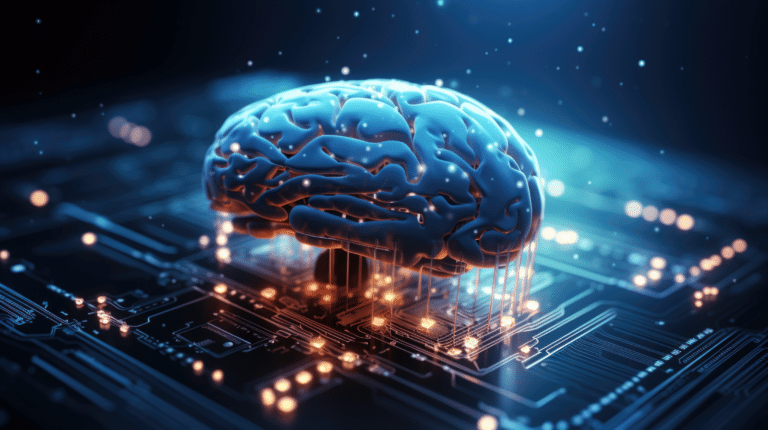Artificial intelligence (AI) is transforming industries, reshaping the way we interact with technology, and even how businesses operate. From chatbots to generative AI, there are many types of AI that offer unique benefits across sectors like healthcare, business, and customer service.
In this post, we’ll dive deep into the types of AI, their characteristics, and examples of how these applications are changing the world. We’ll also look at key concepts like machine learning, natural language processing, and generative AI, along with how they’re used in real-world scenarios.
What is AI?
Artificial Intelligence refers to the creation of intelligent systems that mimic human cognitive functions such as learning, reasoning, and problem-solving. AI is about making machines capable of performing tasks that typically require human intelligence—from speech recognition to decision-making, and even generative content creation.
At its core, AI relies on data and algorithms to perform tasks efficiently and learn from previous experiences. The types of AI systems vary widely, from simple automation to more complex systems capable of evolving their behavior over time. Let’s explore the main types of AI and how each category functions.
Types of AI
AI is typically categorized into three distinct types based on its capabilities: Narrow AI, General AI, and Super AI.
1. Narrow AI (Weak AI)
Narrow AI, or Weak AI, is designed to perform specific tasks without possessing general human intelligence. These AI systems are highly specialized, focusing on a single or narrow domain. Examples include natural language processing for voice assistants like Alexa, and recommendation algorithms on platforms like Netflix.
Narrow AI is already part of our daily lives, from email filters to customer chatbots, and even in predictive models used in business.
Examples of Narrow AI:
- Machine learning models that detect fraud in banking
- Natural language processing in virtual assistants like Siri
- Personalized recommendations on e-commerce websites
2. General AI (Strong AI)
General AI, also known as Strong AI, refers to AI systems with the ability to learn, understand, and apply knowledge across a wide range of tasks, similar to a human. While general AI remains mostly theoretical today, researchers are striving to develop AI systems that can perform any intellectual task a human can do.
Unlike narrow AI, general AI would be able to learn from its environment and apply knowledge across different fields, much like how humans do. This level of AI has not yet been achieved, but ongoing research in machine learning and deep learning could bring it closer to reality.
3. Super AI
Super AI is a hypothetical form of AI that surpasses human intelligence. This would involve machines not only mimicking human thought processes but also being able to think, make decisions, and innovate on levels far beyond what humans are capable of.
Super AI is still a concept that lies in the distant future, but its implications could be revolutionary, reshaping every aspect of life—from business and healthcare to science and technology.
Key Branches of AI
Several core technologies power AI, each with its unique methodologies and applications. Below, we’ll explore key branches such as machine learning, deep learning, natural language processing, and generative AI.
1. Machine Learning
Machine learning is one of the most prominent branches of AI. It involves creating systems that can learn from data and improve their performance over time without explicit programming. These systems use algorithms to identify patterns in large datasets, allowing them to make predictions or decisions based on historical data.
The power of machine learning lies in its ability to handle complex, large-scale data. It’s the technology behind many applications we interact with daily, such as personalized marketing, fraud detection, and even self-driving cars.
Key Machine Learning Techniques:
- Supervised learning: Models are trained on labeled datasets.
- Unsupervised learning: Models learn from unlabeled data.
- Reinforcement learning: Models learn from trial and error.
2. Deep Learning
Deep learning is a subset of machine learning that uses neural networks with many layers (hence “deep”) to analyze vast amounts of data. It is particularly effective in tasks like image recognition, speech processing, and even beating humans in complex games like Go.
Deep learning models are designed to mimic the way the human brain works, allowing them to learn from large datasets and improve over time. They are particularly useful for tasks that require a high degree of accuracy, such as facial recognition or medical diagnosis.
3. Natural Language Processing (NLP)
Natural Language Processing (NLP) is another critical field within AI, focusing on the interaction between computers and human language. The goal of NLP is to enable machines to understand, interpret, and respond to text or voice data in ways that are both meaningful and useful.
NLP powers a range of technologies, from chatbots and virtual assistants to language translation tools. As a business application, NLP helps improve customer service through intelligent bots capable of resolving queries and enhancing overall user experience.
Examples of NLP:
- Text translation (Google Translate)
- Sentiment analysis for business reviews
- Natural language processing in personal assistants like Siri
4. Generative AI
Generative AI refers to AI systems capable of creating new content, whether it’s text, images, or even music. These systems rely on advanced machine learning models to produce outputs that closely mimic human-created content. For instance, generative AI tools like ChatGPT can generate coherent, human-like responses in conversational settings, while DALL-E creates realistic images from text prompts.
This type of AI has vast implications for content creation, marketing, and even product design, as it can drastically reduce the time it takes to generate new content for websites, advertisements, and other business applications.
Examples of AI in Action
Let’s take a look at how different types of AI are being applied across industries, especially in business and customer service.
AI in Business
AI is revolutionizing the business world, helping companies improve efficiency, enhance customer engagement, and streamline operations. AI-driven applications such as machine learning models are used to forecast demand, optimize logistics, and personalize marketing efforts.
Business Applications of AI:
- Data analytics and insights for smarter decision-making
- Predictive models for supply chain management
- Personalized recommendations to improve customer experience
One key benefit of AI in business is its ability to process large amounts of data faster than humans, allowing companies to make informed decisions in real-time. AI-powered tools help identify patterns, predict trends, and automate repetitive tasks, freeing up employees for more strategic work.
AI in Customer Service
AI-driven chatbots and natural language processing tools have transformed customer service. These bots can handle a wide range of queries—from order tracking to technical support—allowing businesses to provide round-the-clock assistance to their customers.
In addition to improving response time, AI-powered bots can process complex customer requests and offer personalized solutions. This is where natural language processing plays a critical role, enabling chatbots to understand and respond to customer inquiries in a way that feels natural and human-like.
The Future of AI: What’s Next?
The field of AI is rapidly evolving, with advancements in machine learning, generative AI, and natural language processing paving the way for even more sophisticated systems. As AI continues to advance, we can expect to see more applications that go beyond simple automation.
Key Future Trends in AI:
- AI-driven tools for content creation and design
- Smarter, more intuitive AI systems capable of learning from fewer data points
- Enhanced AI in healthcare for diagnostics and personalized treatment plans
- Advanced generative AI for more creative and personalized business applications
As AI continues to grow, its impact on society and business will only deepen, offering exciting possibilities for innovation and efficiency. Generative AI, in particular, is set to play a critical role in industries that rely heavily on creativity and content generation.
Conclusion
The types of AI that exist today, from narrow AI to the potential for super AI, show the vast potential this technology holds. Whether it’s through machine learning, natural language processing, or the innovative world of generative AI, artificial intelligence is reshaping industries and improving the way we interact with data.
As businesses continue to adopt AI-powered tools, their ability to analyze vast amounts of data, improve customer service, and create new content will set them apart in an increasingly competitive world. From small customer interactions to high-level business decision-making, the future of AI is bright—and it’s only just beginning.


